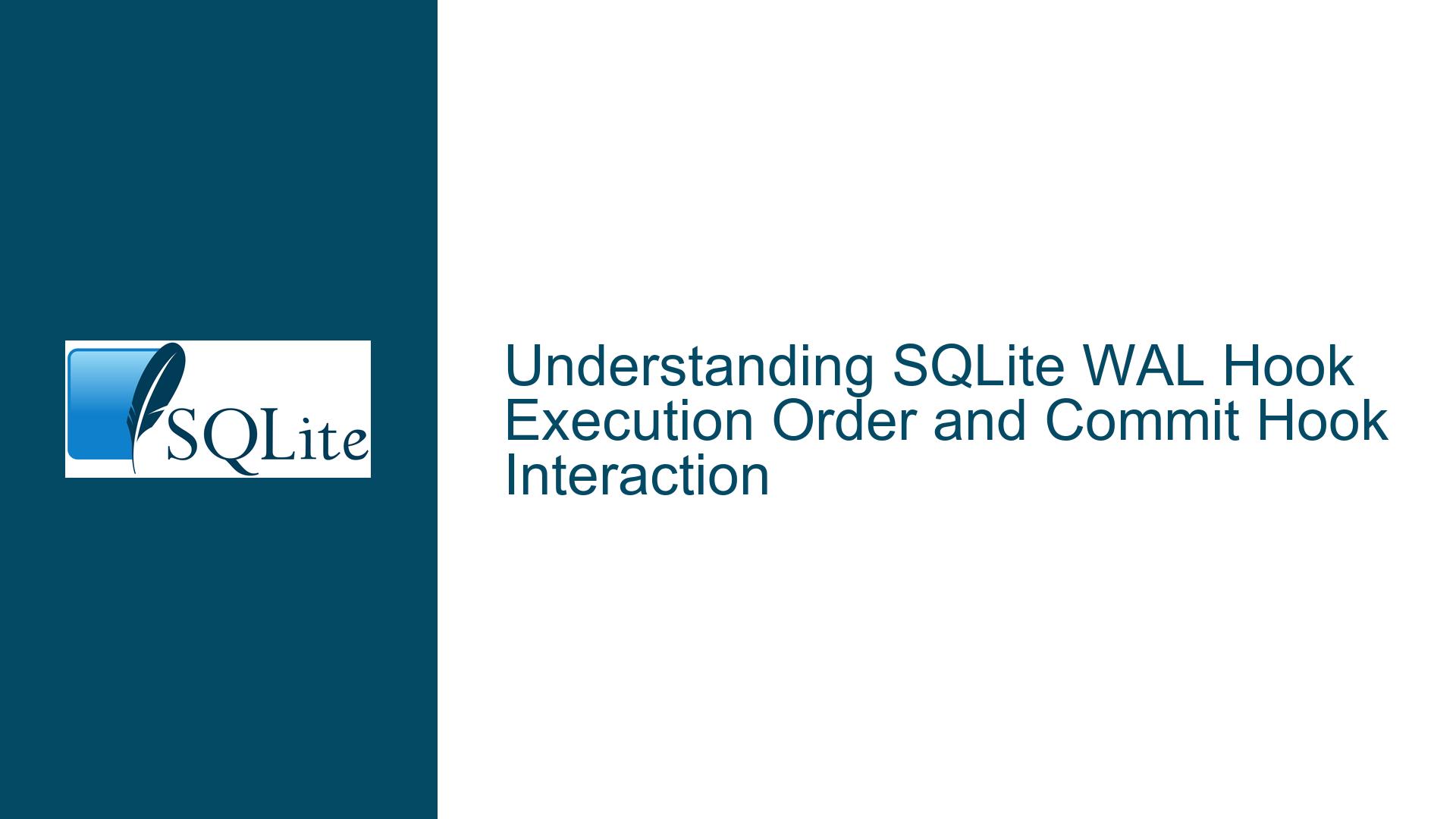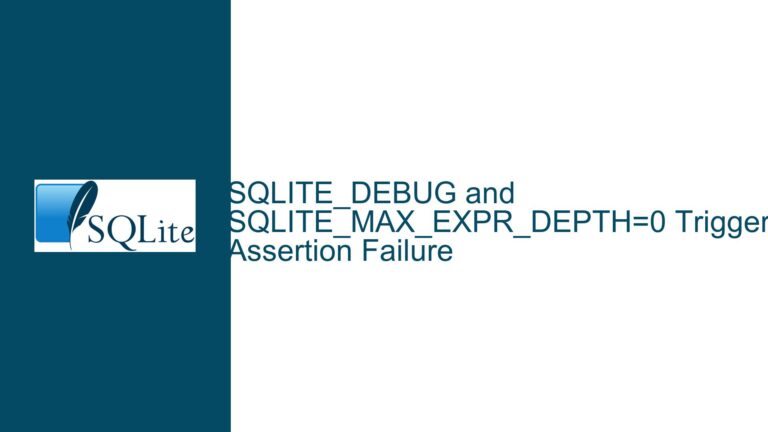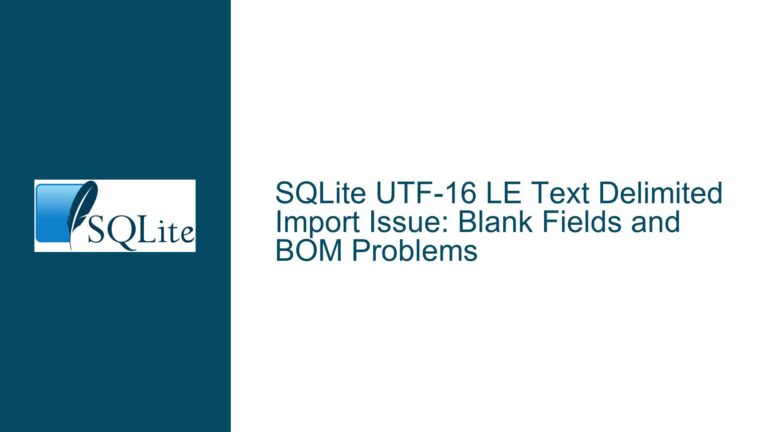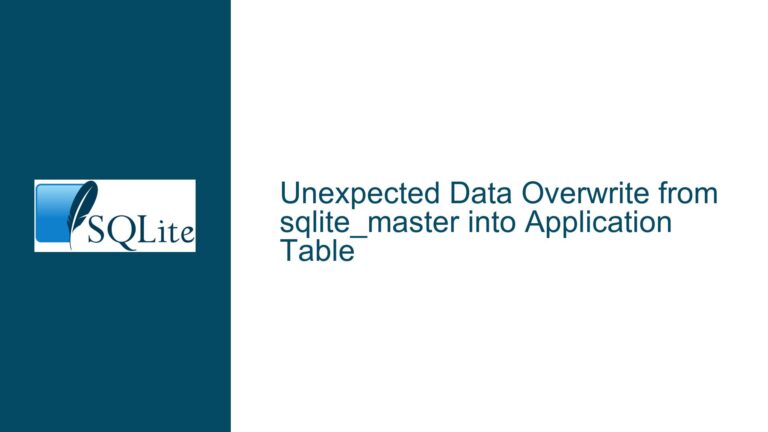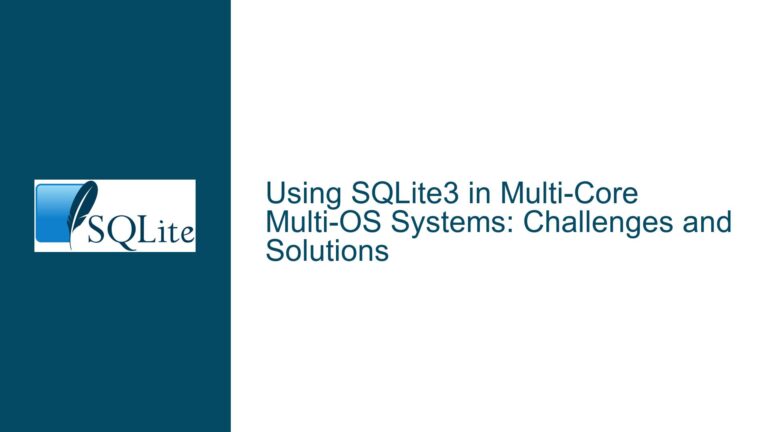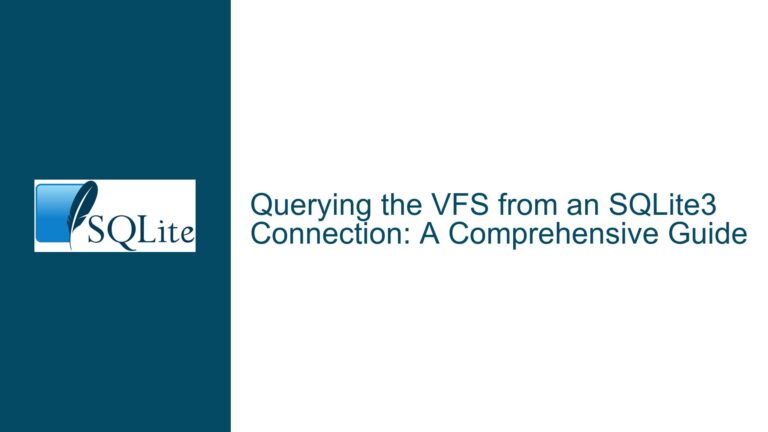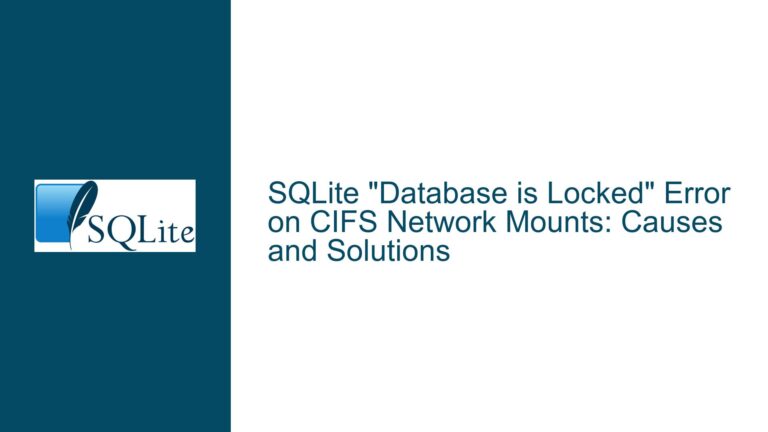SQLite WAL Hook Execution Order and Commit Hook Interaction
SQLite WAL Hook Execution Order Relative to Commit Hook
In SQLite, the Write-Ahead Logging (WAL) mechanism is a powerful feature that enhances database performance by allowing reads and writes to occur simultaneously. However, the interaction between the WAL hook and the commit hook can be a source of confusion, especially when custom hooks are implemented. The core issue revolves around whether the WAL hook is always called after the commit hook and whether overriding the commit hook can prevent the default WAL hook from being executed.
The WAL hook is a callback function that SQLite invokes when a transaction is committed in WAL mode. This hook allows developers to perform custom actions, such as logging or validation, before the transaction is finalized. On the other hand, the commit hook is a more general callback that is invoked during the commit process, regardless of the journaling mode. Understanding the relationship between these two hooks is crucial for developers who need to implement custom behavior during transaction commits.
When a transaction is committed in WAL mode, SQLite follows a specific sequence of operations. First, the changes are written to the WAL file. Then, the commit hook is invoked, allowing custom logic to be executed. Finally, the WAL hook is called, which typically involves updating the database file with the changes from the WAL. The key question is whether the WAL hook is always called after the commit hook and whether overriding the commit hook can interfere with the default WAL hook.
The behavior of these hooks can be influenced by several factors, including the specific version of SQLite being used, the configuration of the database connection, and the implementation of custom hooks. For example, if a custom commit hook is implemented, it is possible that the default WAL hook may not be called if the custom commit hook does not explicitly invoke it. This can lead to unexpected behavior, such as incomplete transaction commits or data inconsistencies.
To fully understand the interaction between the WAL hook and the commit hook, it is necessary to delve into the internal workings of SQLite’s transaction management system. This includes examining the sequence of operations that occur during a commit, the role of the WAL file, and the impact of custom hooks on the default behavior. By gaining a deeper understanding of these mechanisms, developers can ensure that their custom hooks are implemented correctly and that the database remains in a consistent state.
Overriding Commit Hook and Its Impact on Default WAL Hook
One of the primary concerns when working with SQLite’s WAL and commit hooks is the potential impact of overriding the commit hook on the default WAL hook. When a custom commit hook is implemented, it replaces the default commit hook provided by SQLite. This can have significant implications for the behavior of the WAL hook, especially if the custom commit hook does not explicitly invoke the default WAL hook.
The commit hook is a callback function that is invoked during the commit process, allowing developers to execute custom logic before the transaction is finalized. When a custom commit hook is implemented, it is responsible for performing any necessary actions, such as validating data or logging transaction details. However, if the custom commit hook does not explicitly call the default WAL hook, it is possible that the WAL hook may not be executed at all. This can lead to incomplete transaction commits, where changes are written to the WAL file but not applied to the database file.
The relationship between the commit hook and the WAL hook is particularly important in scenarios where data consistency is critical. For example, in a financial application, it is essential that all transactions are fully committed and that no data is lost or corrupted. If the WAL hook is not called due to an overridden commit hook, it could result in data inconsistencies that are difficult to detect and resolve.
To mitigate this risk, developers should ensure that their custom commit hooks explicitly invoke the default WAL hook. This can be done by calling the sqlite3_wal_hook function within the custom commit hook. By doing so, the default WAL hook will be executed, ensuring that changes are properly applied to the database file. Additionally, developers should thoroughly test their custom hooks to verify that they behave as expected and do not interfere with the default behavior of SQLite.
Another consideration is the order in which the commit hook and WAL hook are executed. As mentioned earlier, the commit hook is typically called before the WAL hook. However, this order can be influenced by the implementation of the custom commit hook. If the custom commit hook performs operations that affect the WAL file, it is possible that the WAL hook may be called before the commit hook is completed. This can lead to race conditions or other unexpected behavior.
To avoid these issues, developers should carefully design their custom commit hooks to ensure that they do not interfere with the default behavior of SQLite. This includes ensuring that the commit hook does not perform operations that could affect the WAL file before the WAL hook is called. Additionally, developers should consider using transactions to isolate their custom logic and ensure that changes are applied atomically.
Ensuring Proper Execution of WAL Hook with Custom Commit Hooks
To ensure that the WAL hook is properly executed when using custom commit hooks, developers must take a proactive approach to designing and implementing their hooks. This involves understanding the sequence of operations that occur during a commit, the role of the WAL file, and the impact of custom hooks on the default behavior of SQLite.
One of the first steps in ensuring proper execution of the WAL hook is to explicitly invoke the default WAL hook within the custom commit hook. This can be done by calling the sqlite3_wal_hook function, which registers the default WAL hook with the database connection. By doing so, the default WAL hook will be executed, ensuring that changes are properly applied to the database file.
In addition to explicitly invoking the default WAL hook, developers should also consider the order in which the commit hook and WAL hook are executed. As previously mentioned, the commit hook is typically called before the WAL hook. However, this order can be influenced by the implementation of the custom commit hook. To avoid potential issues, developers should ensure that their custom commit hooks do not perform operations that could affect the WAL file before the WAL hook is called.
Another important consideration is the use of transactions to isolate custom logic and ensure that changes are applied atomically. By wrapping custom logic within a transaction, developers can ensure that changes are either fully committed or fully rolled back, preventing partial commits that could lead to data inconsistencies. This is particularly important in scenarios where data consistency is critical, such as in financial applications or systems that handle sensitive data.
Developers should also thoroughly test their custom hooks to verify that they behave as expected and do not interfere with the default behavior of SQLite. This includes testing the hooks in various scenarios, such as during normal operation, under heavy load, and in the event of a failure. By doing so, developers can identify and address any issues before they impact the production environment.
In addition to testing, developers should also consider using SQLite’s built-in tools for monitoring and debugging. For example, the sqlite3_trace function can be used to trace the execution of SQL statements, providing valuable insights into the behavior of the database. Similarly, the sqlite3_profile function can be used to profile the performance of SQL statements, helping developers identify potential bottlenecks or inefficiencies.
Finally, developers should stay informed about updates and changes to SQLite, as these can impact the behavior of the WAL and commit hooks. By keeping up to date with the latest developments, developers can ensure that their custom hooks are compatible with the latest version of SQLite and take advantage of new features or improvements.
In conclusion, ensuring the proper execution of the WAL hook when using custom commit hooks requires a thorough understanding of SQLite’s transaction management system, careful design and implementation of custom hooks, and rigorous testing and monitoring. By following these best practices, developers can ensure that their custom hooks behave as expected and that the database remains in a consistent state.
